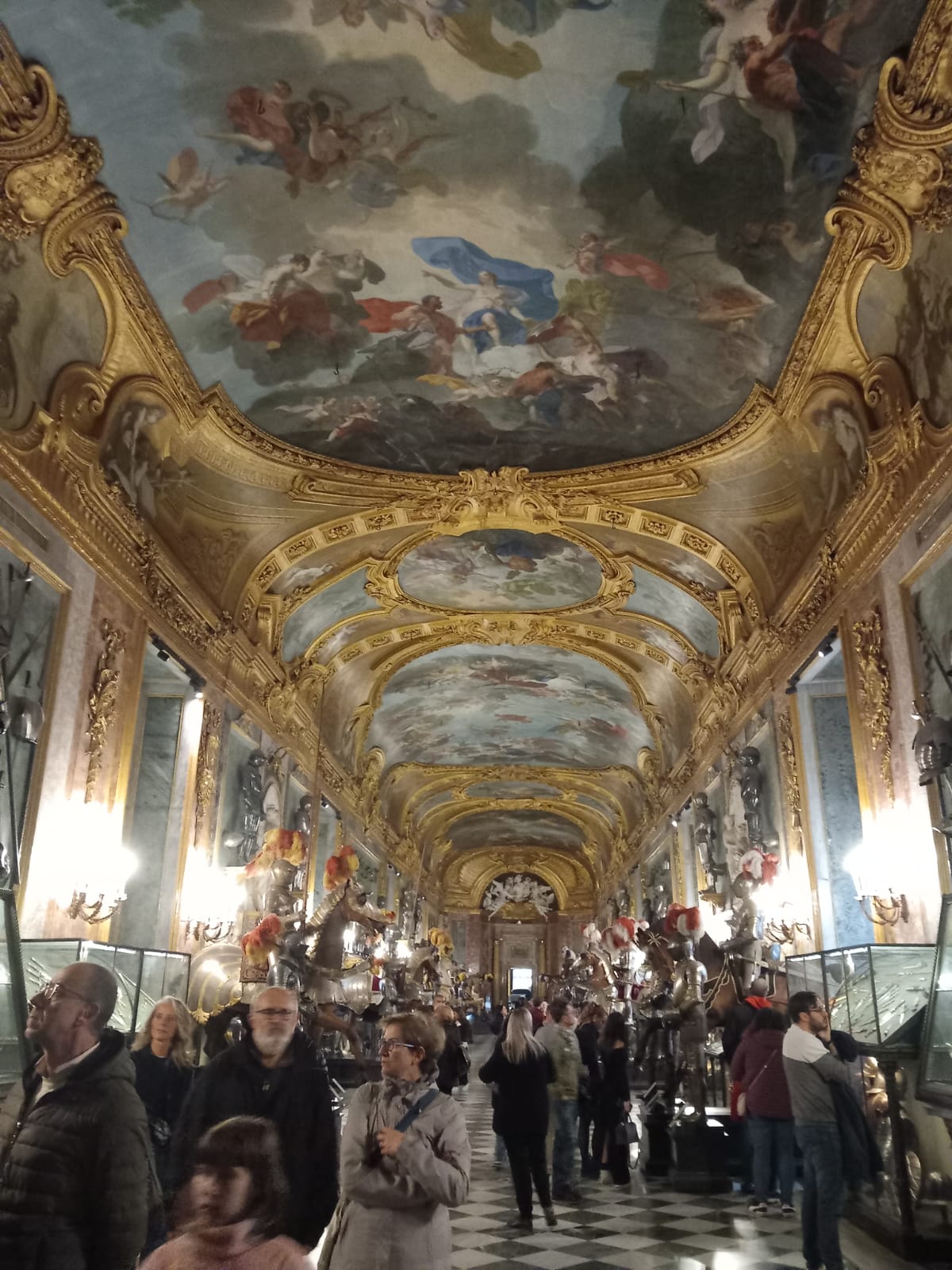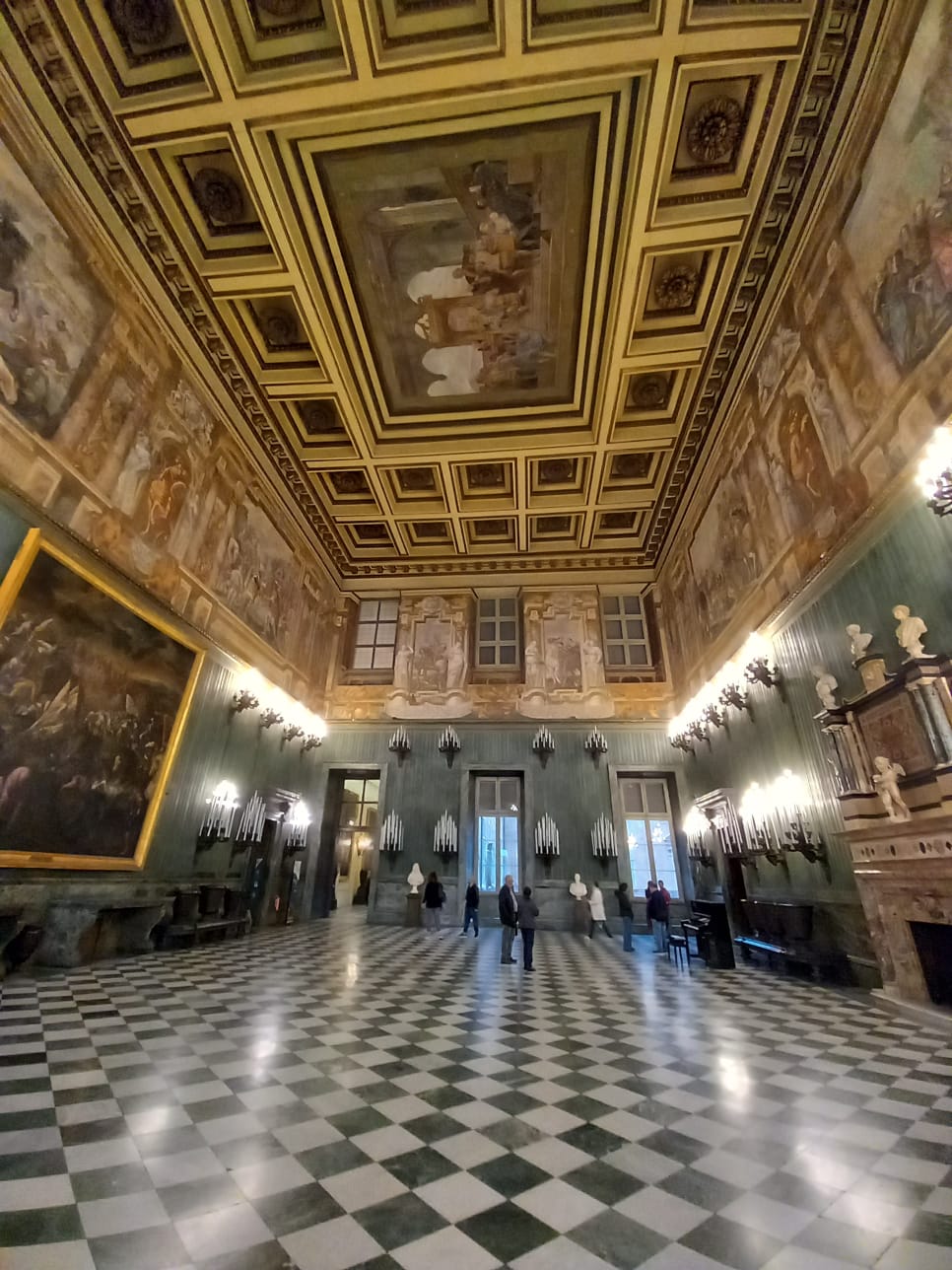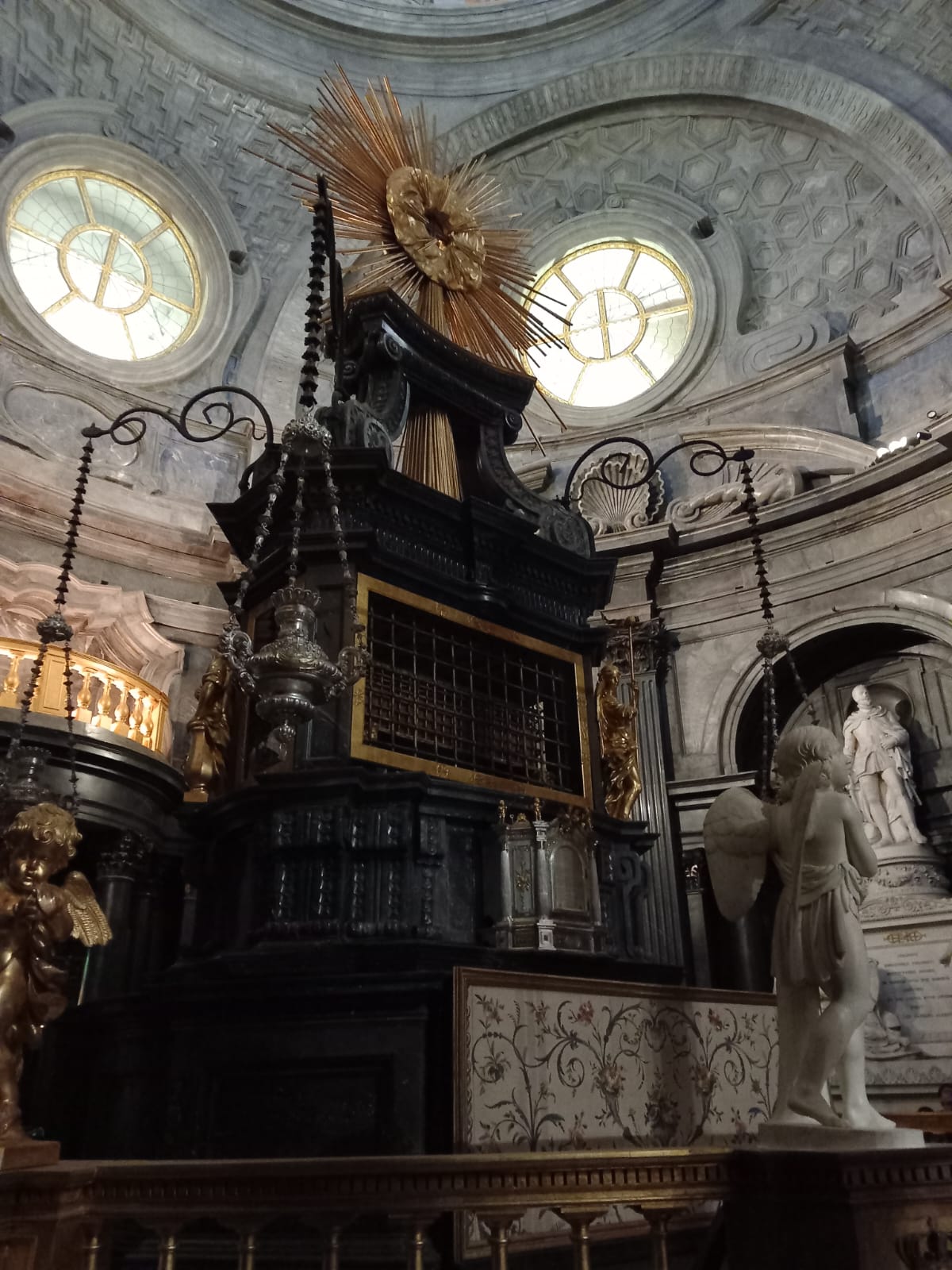Listen to the audio about the Royal Palace and answer the questions.
 |
 |
 |
The Royal Palace of Turin
The Royal Palace of Turin (Palazzo Reale) was the primary and most significant residence of the House of Savoy, serving as the political and administrative center of the Kingdom of Sardinia for nearly three centuries. As part of the Savoy residences ensemble, which includes several other grand palaces, it has been recognized as a UNESCO World Heritage Site.
Located in the heart of the city on Piazzetta Reale, the palace is adjacent to Piazza Castello, the main square from which Turin’s major streets—Via Po, Via Roma, and Via Garibaldi—originate.
Architectural Evolution
The palace was originally designed in the late 16th century as a royal residence by Ascanio Vittozzi. After his death, the project was entrusted to Carlo di Castellamonte by Christine of France. During the 17th century, Carlo Morello modified the façade, flanking it with two taller lateral wings.
The interior of the palace is adorned with lavish frescoes celebrating the House of Savoy, painted by renowned artists. Daniel Seiter decorated the Gallery, while the famous architect Guarino Guarini designed the Chapel of the Holy Shroud, connecting it to several palace rooms. In the 18th century, Filippo Juvarra introduced notable renovations, including the Scissors Staircase (Scala delle Forbici) and the Chinese Cabinet. During the 19th century, Ernesto Melano and Pelagio Palagi incorporated elements of Egyptian and classical art into the interiors, while Palagi also designed the palace’s grand entrance gate, adorned with statues of Castor and Pollux.
When the Kingdom of Italy moved its capital to Rome, the Royal Palace was transformed into a museum, which it remains today. Visitors can explore the Noble Floor, featuring the Royal Winter Apartment (l’Appartamento d’Inverno) and the Throne Room, as well as the Gallery of Daniel.
Key Attractions
The Royal Armory houses one of the most valuable collections of arms and armor, assembled by the House of Savoy. The Scissors Staircase leads to the second floor, where visitors can find the Apartment of the Prince of Piedmont, the Chinese Cabinet, and the rooms of Princess Maria José.
The palace courtyard preserves the remains of a Roman amphitheater, known as La Manica Nuova. Surrounding the palace, the Royal Gardens (Giardini Reali) were designed by André Le Nôtre, the same architect responsible for the gardens of Versailles.
The Royal Palace Museums, along with the Sabauda Gallery, Royal Library, Archaeological Museum, and Royal Armory, form part of Polo Reale, all of which are included in the UNESCO World Heritage List.